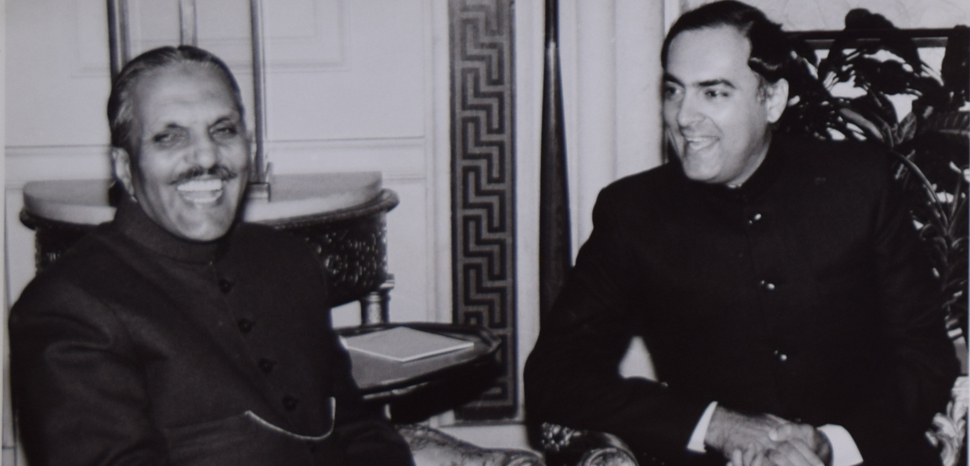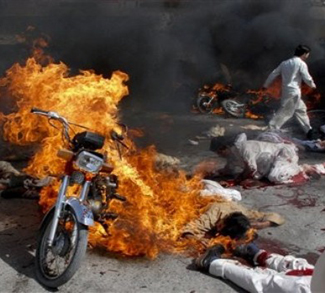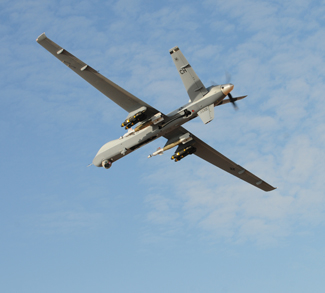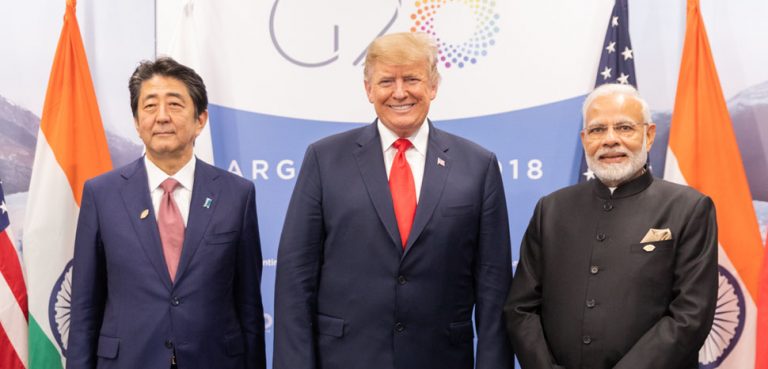The state of Pakistan came into existence as a result of the partition of the British Indian Empire. During the pre-independence period, the leadership of the Muslim League argued that the Indian Muslims were a ‘separate nation’ of one hundred million people, divided from the Indian Hindus by culture, history, and values. The delay in the development of middle class in the Muslims and the unequal composition of the intelligentsia, particularly in comparison to Hindus, had totally changed the class character and nature of leadership in the community. The Muslim intelligentsia was composed of landlords, whereas the Hindu intelligentsia recruited from all sections of society. As a result, the Hindu intelligentsia was more dynamic and progressive, while the Muslim intelligentsia remained conservative and feared that ideas of liberal democracy would undermine their leadership in Muslim society.
Creation and social challenges
After its creation, Pakistan stood as a divided, incomplete, and partial homeland for the region’s Muslims. It comprised of two wings: East and West Pakistan. East Pakistan, which constituted about 55 percent of the population, was part of Bengal. Before Pakistan’s was created it was the rural hinterland of Calcutta’s mills and factories. Culturally, East Bengal shares in the pride of Calcutta and glorious Bengali prose and poetry. Since the Muslims were a majority in the province, the issue of political representation gave them an opportunity to assert their power against the cultural and economic domination of the Hindu community. West Pakistan was made up of part of the province of Punjab, the North West Frontier Province, Sindh, Baluchistan, and ten small princely states. About 45 percent of the population lived in the Western part, and it was almost entirely agricultural. Social and political change came to the Muslims of the Indus valley somewhat slower than to their brethren in the Gangetic delta. But surprisingly, the Muslim League leadership did not come from either Bengal or the Indus Valley; it was drawn heavily from Muslim-minority provinces in India-Mohammad Ali Jinnah from Bombay and Liaquat Ali Khan, the first Prime Minister of Pakistan, from New Delhi.
From its birth, Pakistan’s greatest social challenges have been how to create a sense of citizenry among communities that have not historically regarded each other as ‘a people,’ aside from most being adherents of the same major religion. Consequently, it has been pulled strongly by public sentiment and the views of political leaders toward greater conformity with Islamic principles and law. Muslims and Hindus, while uneven around the country, are deeply embedded in some areas. Both states have found that such tensions are partly open to remedy through education, economic development, legal recourse, and direct government action.
Political developments
The Islamic Republic of Pakistan began its political life with what is formally described as federal parliamentary government. Mohammad Ali Jinnah, the chief mentor of Pakistan, and other Western-oriented professionals envisioned a multiethnic, pluralistic, and indubitably democratic country. He reminded the Constituent Assembly of Pakistan ‘if we want to make this great state of Pakistan happy and prosperous we should wholly and solely concentrate on the well-being of the people, and especially of the masses and the poor.’ However, it was too good to last. The death of Jinnah within a year of the independence and the sudden demise of his true successor, Liaquat Ali Khan, in 1951, created a leadership void which could not be filled until the first martial law period in 1958. There was a keen contest for political dominance between the fundamentalists with the arch conservative orthodox outlook, and the secular, democratic enlightened and liberal section of society with the modernist view of man and society. From the viewpoint of stable and effective form of government, Pakistan is a state that’s ‘still in the making.’ The promulgation and abrogation of successive constitutions in Pakistan went nowhere.
An assessment of Pakistan’s political development since 1947 paints an uneasy and troubled picture. From the start, with weak social and political spheres in the background, the nexus between the bureaucrats and the army began to take a definite shape. The first constitution, which was promulgated on March 23, 1956, was abrogated in October 1958, and during this short period of time no elections took place. The second constitution was promulgated on June 8, 1962 and abrogated by General Agha Mohammed Yahya on March 29, 1969. Another constitutional document, the Legal Framework Order of 1969 was issued by General Mohammed Yahya Khan. It abolished the One Unit Plan and provided the framework for the development of a new constitution. The Legal Framework Order set the stage for the 1970 elections, the first direct elections based on universal suffrage in Pakistan’s history. It was a free election but the result – an overwhelming victory in the east for Sheikh Mujibur Rahman – led into the imposition of martial law, followed by the brutal military crackdown which culminated in the 1971 war with India and the independence of Bangladesh.
The constitution of 1973 proved to be the most durable. Though the country again witnessed a military coup by General Zia in 1977, it was kept suspended. On March 18, 1985, President Zia promulgated the Revival of the Constitution Order of 1985, which added new amendments to the constitution. With the new provisions, Pakistan experimented with a policy approach that promised Islamisation. His was a government dominated by the military and run by civilian bureaucrats. The governance of Zia seemed at times to be two steps backward, one step forward. At a political level, Zia’s supporters included fundamentalist and reactionary Islamist parties. A large section of people, especially in Punjab, felt more comfortable and preferred Zia’s Islamic status quo orientation as opposed to Bhutto’s socialist rhetoric. His attempt to Islamise and legitimize the rule for a new lease of life had further polarised country’s social segments.
Effects of the Soviet takeover
Once again the social composition and power structure in Pak society witnessed a sea change when, at the close of the year 1979, Soviet Russia intervened in Afghanistan and installed a puppet government of their own. The incident paved the way for the intermingling of Pak-Afghan society on more than one levels. It affected Pakistani society qualitatively and quantitatively because there was a massive influx of arms, especially submachine guns and automatic rifles as weapons meant for Afghan guerillas proliferated on the illegal arms market. Linkages between Mujahideen groups and rightwing, religious parties of Pakistan began to spread Islamic urges and fervor. The then-ruler of Pakistan failed to estimate the far-reaching damaging consequences, and allowed it all to happen, contrary to social progress and harmony. Later, this mixing of Pak–Afghan society at various levels led to the formation of the Taliban, a home-grown Pakistani militia. The nexus formed in the Zia period also disturbed the democratic regimes of Benazir Bhutto and Nawaz Sharif, and ultimately opened the route for latter’s replacement with army chief General Pervez Musharraf in October 1999 after the Kargil debacle.
The views expressed in this article are those of the author alone and do not necessarily reflect Geopoliticalmonitor.com or any institutions with which the author is associated.




